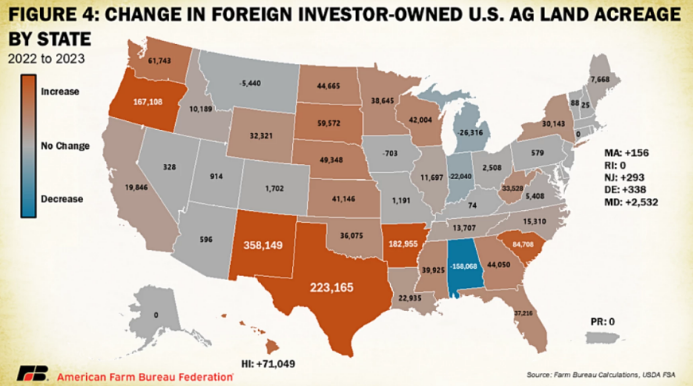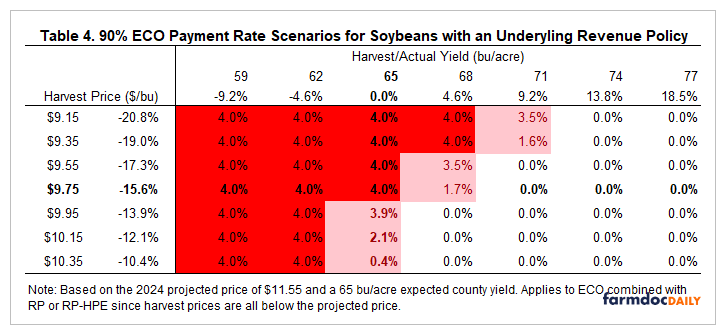By Gary Schnitkey and Nick Paulson et.al
Cover crops are a farming practice that can reduce negative environmental impacts. Public subsidies are provided to encourage them. Nevertheless, area in cover crops increased less between 2017 and 2022 than between 2012 and 2017. Moreover, other covered cropland has declined including cropland in commercial fall-seeded crops (particularly winter wheat and forages), land in the Conservation Reserve Program, and pasture and forage land that can be converted into cropland without additional improvement (see Data Note). These findings raise questions about current US policy initiatives in this area of farm environmental policy, including the level of subsidy needed.
Census Question
The 2012, 2017, and 2022 Census of Agriculture asked respondents, “…, considering the cropland acres on this operation, how many acres were planted to a cover crop? (Cover crops are planted primarily for managing soil fertility, soil quality, and controlling weeds, pests, and diseases.) Exclude CRP.” (see Census Appendix). This wording means a cover crop could be planted after a crop is harvested or be the only use of land during the census year.
Cover Crops, US
The 2022 Census reported 18.0 million acres of cover crops, 2.6 million or 17% more than the 2017 Census (see Figure 1). In comparison, cover crop acres increased 5.1 million or 50% between the 2012 and 2017 Census.

Cover Crops, Largest States
Texas had both the largest number (1.55 million) of cover crop acres in 2022 and the largest increase (0.54 million) in cover crop acres between 2017 and 2022 (see Figure 2). Iowa had the second largest acres (1.28 million) while North Dakota had the second largest increase (0.43 million). Iowa was the only other state with an increase that exceeded 0.25 million acres. For a discussion of changes in cover crop use by state between the 2012 and 2017 Census, see the farmdoc daily of July 24, 2019.

The 13 states in Figure 2 had more than 0.5 million acres in cover crops during 2022. They accounted for 65% of US cover crop acres in 2022 and 92% of the increase from 2017. Nine of the states in Figure 2 were among the 10 states that had the most acres in the Pandemic Cover Crop Program (PCCP) for the 2021 crop year (see American Farmland Trust). PCCP provided a subsidy on crop insurance premium of up to $5 per acre if a cover crop was planted. North Dakota had the most acres In PCCP, followed by Texas, Iowa, Indiana, and Missouri. PCCP was also in effect for the 2022 crop year (see USDA, RMA (US Department of Agriculture, Risk Management Agency)). PCCP likely impacted the number of cover crop acres reported in the 2022 Census.
Covered Cropland, US
Between 2012 and 2022, acres changed little for forages as well as for pasture and grazing land that could be cropped without additional improvements (see Figure 3). However, winter wheat and cropland in CRP declined, especially between 2012 and 2017. Cropland in CRP includes land in WRP (Wetlands Reserve Program), FWP (Farmable Wetlands Program), and CREP (Conservation Reserve Enhancement Program).

Among CRP’s environmental benefits is that former cropland has a cover on it during the non-commercial crop season, but CRP and cover crop subsidies have different policy goals. Cover crop subsidies impact working lands. CRP is a multiple-year land retirement program. Nevertheless, it is interesting that the 6.4 million acre decline in CRP between 2012 and 2022 largely offsets the 7.7 million acre increase in cover crops. The Federal budget has, however, been positively impacted because average subsidy per cover crop acre is less than average CRP rental rate per acre.
Total Covered Cropland, US
Total covered cropland declined nearly 10 million acres or -4% between 2012 and 2022 (see Figure 4). The decline was slower between 2017 and 2022 (-3%). Total covered cropland includes land in cover crops, winter wheat, and forages as well as cropland in CRP and pasture and grazing land that can be cropped without additional improvement.

Source : illinois.edu